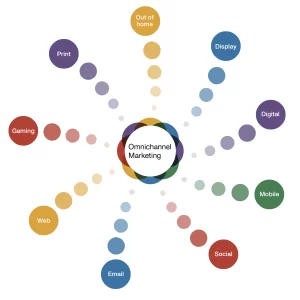Understanding the Distinctions: Hot Desking vs. Desk Sharing
Hot desking and desk sharing are two popular concepts in modern office setups that offer flexibility and convenience to employees. While they may seem similar, there are distinct differences between the two. Hot desking refers to the practice of employees using any available desk on a first-come, first-serve basis. This means that there is no assigned seating, and employees must find a suitable workspace each day. On the other hand, desk sharing involves multiple employees using the same desk but at different times. Instead of a one-person, one-desk setup, desk sharing allows for a more efficient utilization of workspace.
One key distinction between hot desking and desk sharing lies in the level of personalization. In a hot desking environment, employees may not have the ability to personalize their workstations since they are constantly changing desks. This lack of personalization can lead to a more transient and flexible work environment. On the other hand, desk sharing allows employees to have a designated desk that they can personalize to their liking when it is their turn to use it. This sense of ownership and personalization can contribute to a more stable and comfortable work experience.
View our parent site for great tips and advice.
Optimizing Workspace Flexibility: A Comparison of Hot Desking and Desk Sharing
Hot desking and desk sharing are two popular workspace options that offer organizations the flexibility to optimize their workspace allocation. While they both serve to improve workspace flexibility, there are distinct differences between the two.
Hot desking is a practice where employees do not have assigned desks and can choose to work from any available workstation. This promotes a dynamic and collaborative environment, as employees are encouraged to interact with different individuals and teams each day. On the other hand, desk sharing involves multiple employees sharing a workstation at different times. It allows organizations to maximize space utilization and reduce the number of desks required.
Both hot desking and desk sharing have their advantages and disadvantages. Hot desking promotes collaboration, innovation, and flexibility, as employees have the freedom to move around and work alongside different colleagues. However, it can also lead to a lack of personalization and stability, as employees may not have a permanent space to call their own. Desk sharing, on the other hand, allows for a more consistent and personalized workspace, with individuals having their designated area. However, it may lead to potential conflicts in terms of seating arrangements and limited space availability.
Ultimately, organizations need to consider their specific needs and goals when choosing between hot desking and desk sharing. Both options offer flexibility, but the decision should be made based on the desired level of collaboration, individual work styles, and the overall workspace culture. By understanding the distinctions and evaluating their pros and cons, organizations can effectively optimize their workspace flexibility and create a productive work environment.
Exploring Workspace Dynamics: Hot Desking versus Desk Sharing
Hot Desking and Desk Sharing are both methods of optimizing workspace flexibility, but they differ in their approach. Hot Desking involves a system where employees do not have assigned desks and instead choose an available workstation each day. This promotes a dynamic and fluid work environment, encouraging interaction and collaboration among team members. On the other hand, Desk Sharing allows employees to have a designated desk that they share with others, usually on a rotational basis. This provides a sense of ownership and familiarity, while still allowing for some flexibility.
The dynamics of these two approaches can greatly impact the overall workspace experience. Hot Desking, with its ever-changing seating arrangements, encourages employees to adapt and be versatile. It fosters a sense of adaptability and versatility, as employees often work in different areas alongside different colleagues. This can lead to increased communication and knowledge-sharing among team members. Desk Sharing, on the other hand, allows for a more consistent workspace setup. Employees can personalize their shared desk to some extent, making it feel more like their own. This can create a sense of belonging and provide stability in the workplace. Overall, understanding the dynamics of these two methods can help organizations determine which approach aligns better with their goals and priorities.
Navigating Office Space Options: Hot Desking and Desk Sharing Explored
Hot desking and desk sharing are two office space options that have gained popularity in recent years due to their ability to maximize workspace flexibility and efficiency. While they may seem similar on the surface, there are distinct differences between the two.
Hot desking allows employees to have access to a range of workstations on a first-come, first-served basis. This means that employees do not have a fixed desk and must choose an available workstation each day. This approach promotes flexibility and encourages collaboration among colleagues as it allows for easy interaction and idea sharing. Additionally, hot desking can be cost-effective for businesses as it reduces the need for individual workstations and can accommodate a greater number of employees in a smaller space.
On the other hand, desk sharing involves multiple employees sharing a designated desk at different times. Unlike hot desking, desk sharing assigns specific desks to employees, albeit on a rotating basis. This allows employees to have a sense of ownership over their designated workspace while still allowing for flexibility and utilization of space. It promotes a more personalized work environment, where employees can personalize their desk and keep personal belongings. Additionally, desk sharing allows for better organization as each employee knows exactly where they will be sitting on a given day.
In summary, while both hot desking and desk sharing offer benefits in terms of flexibility and efficiency, they differ in terms of the approach to workspace usage. Hot desking promotes a dynamic and collaborative work environment, while desk sharing allows for a more personalized workspace. The choice between the two ultimately depends on the specific needs and preferences of the organization and its employees.
Unpacking Workspace Efficiency: A Closer Look at Hot Desking and Desk Sharing
Hot desking and desk sharing, two popular workspace strategies designed to optimize efficiency, differ in their approach and execution. Hot desking refers to a system where employees do not have assigned desks and instead choose a workspace on a first-come-first-served basis. This allows for maximum flexibility and adaptability, as individuals can pick a space that best suits their needs on any given day. On the other hand, desk sharing involves multiple employees sharing a single desk space but at different times. This strategy offers a more structured approach, ensuring that each employee has their own designated workspace, albeit at non-overlapping time intervals.
When it comes to workspace efficiency, hot desking and desk sharing present different advantages and considerations. Hot desking promotes collaboration and flexibility by encouraging employees to interact with different colleagues in ever-changing work environments. This can foster creativity, knowledge sharing, and a sense of community. However, it can also lead to inconsistencies and interruptions as employees may have to adjust to new workstations regularly. Desk sharing, on the other hand, offers a more consistent and personalized experience for each employee, as they have their own dedicated workspace during their assigned time slots. This can provide a sense of ownership and familiarity, but it may limit the opportunity for spontaneous collaboration among employees who are not sharing the same designated desk. Ultimately, organizations must carefully consider their specific needs and goals to determine which workspace strategy would be most effective in enhancing efficiency and productivity.
Enhancing Workplace Collaboration: The Contrasts between Hot Desking and Desk Sharing
Hot desking and desk sharing are two popular workplace strategies that aim to enhance workplace collaboration. While they share the common goal of fostering collaboration, these strategies differ in how they are implemented and the level of flexibility they offer.
Hot desking is a system in which employees do not have assigned desks but rather choose their workstation on a first-come, first-served basis. This promotes spontaneity and allows employees to interact with different colleagues on a daily basis, fostering cross-functional collaboration. On the other hand, desk sharing is a more structured approach in which employees have assigned desks but can share them with others when they are not in use. This allows for team members to have a designated space where they can personalize and customize their work environment, while also enabling the opportunity for collaboration with others when needed.
Upgrade Your Workspace with Teletracker’s Hot Desking Solutions
Transforming your office environment into a dynamic, flexible space has never been easier. With Teletracker’s innovative hot desking solutions, you can optimize efficiency, collaboration, and adaptability within your workplace. Say goodbye to traditional static workstations and embrace a more agile approach that empowers your team to thrive. Whether you’re a small startup or a large corporation, Teletracker caters to your specific needs with seamless integration and unparalleled support. Take the first step towards enhancing productivity and fostering creativity by contacting Teletracker today at https://teletracker.net. Redefine your workspace experience and unlock the full potential of your team with Teletracker’s hot desking solutions.
FAQS
What is hot desking?
Hot desking refers to the practice of employees not having assigned desks and instead choosing a desk to work from each day.
What is desk sharing?
Desk sharing is when employees share desks with their colleagues, but each employee still has an assigned desk that they can use when needed.
What is the main difference between hot desking and desk sharing?
The main difference is that hot desking does not provide employees with assigned desks, while desk sharing allows employees to have their own designated desk.
How does hot desking promote workspace flexibility?
Hot desking allows employees to choose where they want to sit each day, providing them with the flexibility to work in different areas of the office and collaborate with different colleagues.
How does desk sharing optimize workspace flexibility?
Desk sharing ensures that each employee has a designated desk that they can use, giving them a sense of ownership and stability, while still allowing for flexibility if they need to work in a different area.
What are the workspace dynamics associated with hot desking?
Hot desking encourages a more dynamic and fluid workspace, as employees are not tied to a specific desk and can easily move around the office depending on their needs or preferences.
How does desk sharing impact workspace dynamics?
Desk sharing maintains a more consistent workspace dynamic, as employees have their own designated desk that they can personalize and feel a sense of ownership over.
In terms of office space options, what does hot desking entail?
Hot desking allows for a more open concept office space, as employees are not tied to specific desks and can work wherever there is an available space.
What are the office space options associated with desk sharing?
Desk sharing still provides employees with their own designated desk, allowing for more personalized workspaces within the office.
How does hot desking contribute to workspace efficiency?
Hot desking can increase workspace efficiency by optimizing the utilization of available desks and workspaces, as employees are not tied to specific desks that may go unused for certain periods of time.
How does desk sharing enhance workspace efficiency?
Desk sharing can enhance workspace efficiency by ensuring that each desk is utilized by multiple employees, making the most of available resources and reducing wasted space.
How does hot desking impact workplace collaboration?
Hot desking can enhance workplace collaboration by encouraging employees to work in different areas of the office and interact with colleagues they may not usually collaborate with.
What are the contrasts between desk sharing and workplace collaboration?
Desk sharing may not have as significant an impact on workplace collaboration, as employees still have their own designated desks and may be less inclined to move around and interact with different colleagues.


